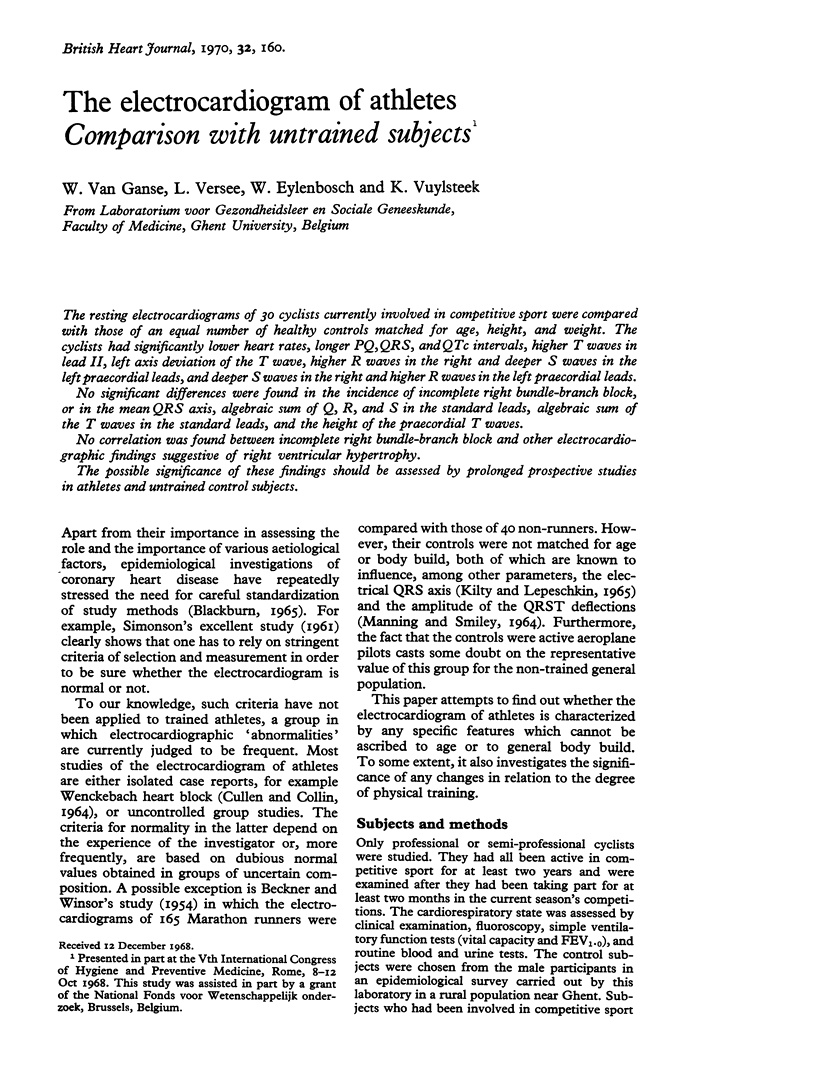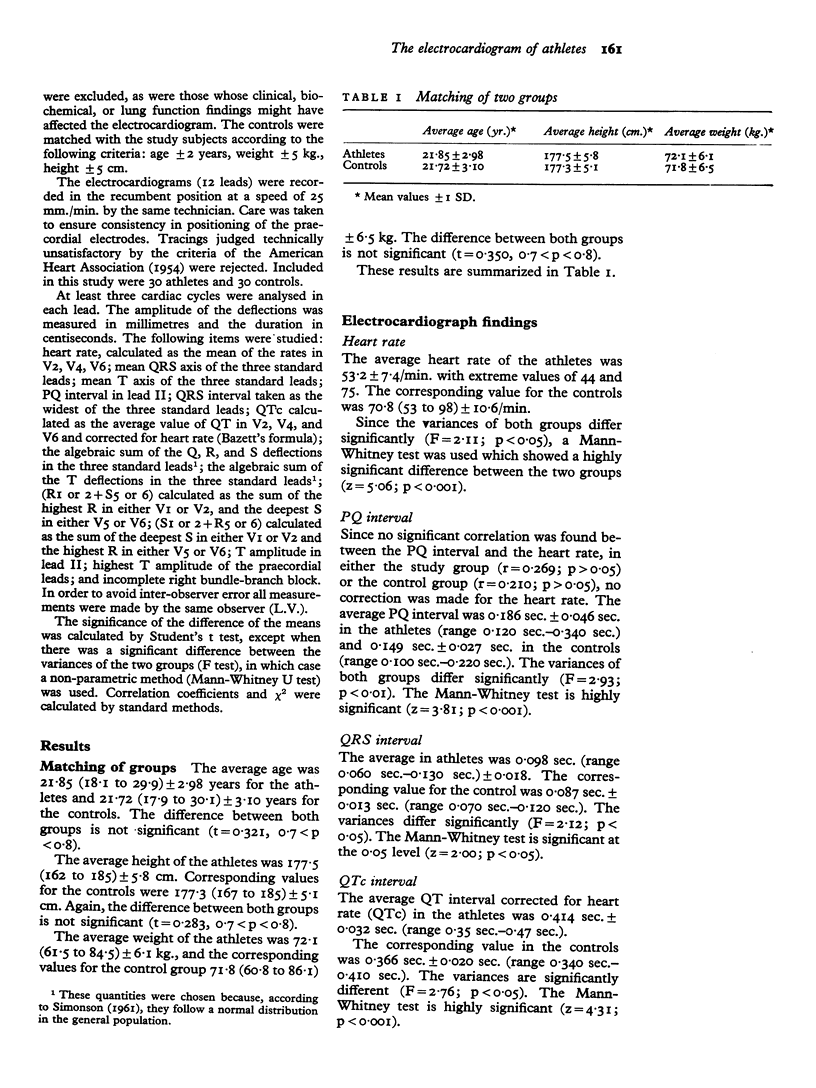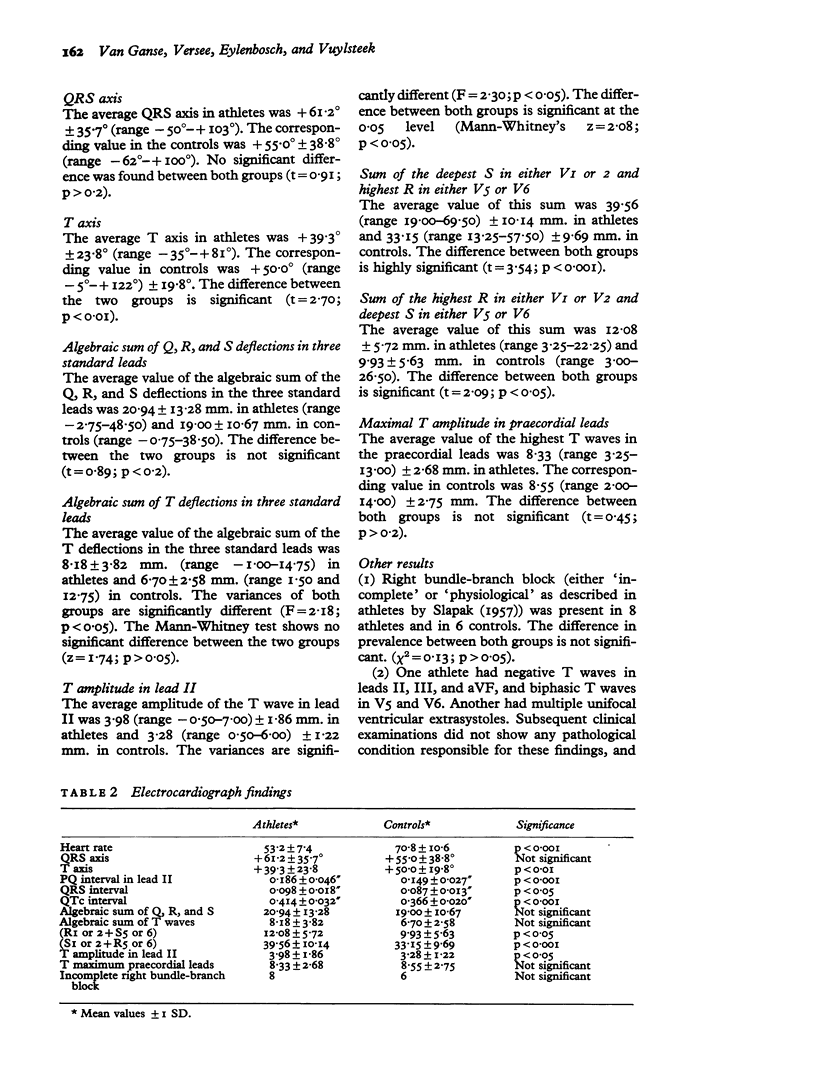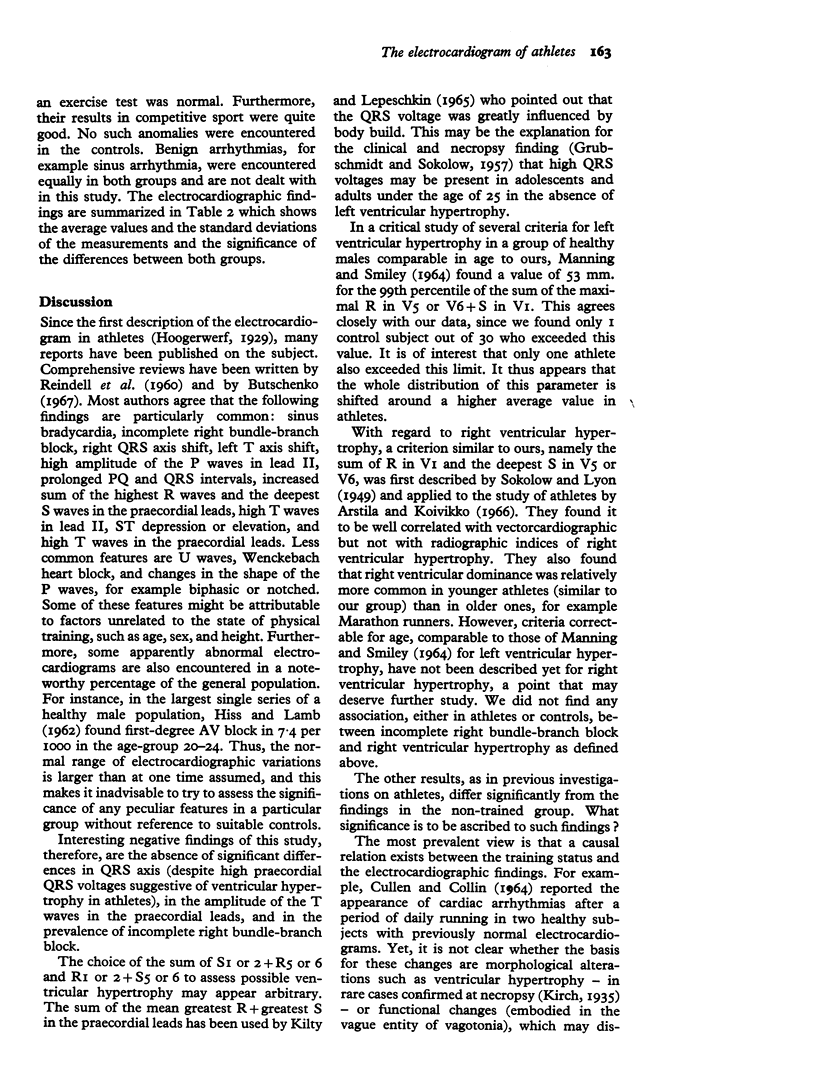Abstract
The resting electrocardiograms of 30 cyclists currently involved in competitive sport were compared with those of an equal number of healthy controls matched for age, height, and weight. The cyclists had significantly lower heart rates, longer PQ,QRS, and QTc intervals, higher T waves in lead II, left axis deviation of the T wave, higher R waves in the right and deeper S waves in the left praecordial leads, and deeper S waves in the right and higher R waves in the left praecordial leads.
The possible significance of these findings should be assessed by prolonged prospective studies in athletes and untrained control subjects.
Full text
PDF




Selected References
These references are in PubMed. This may not be the complete list of references from this article.
- Arstila M., Koivikko A. Electrocardiographic and vectorcardiographic signs of left and right ventricular hypertrophy in endurance athletes. J Sports Med Phys Fitness. 1966 Sep;6(3):166–175. [PubMed] [Google Scholar]
- BECKNER G. L., WINSOR T. Cardiovascular adaptations to prolonged physical effort. Circulation. 1954 Jun;9(6):835–846. doi: 10.1161/01.cir.9.6.835. [DOI] [PubMed] [Google Scholar]
- Blackburn H. The electrocardiogram in cardiovascular epidemiology: problems in standarized application. Ann N Y Acad Sci. 1965 Aug 6;126(2):882–905. doi: 10.1111/j.1749-6632.1965.tb14331.x. [DOI] [PubMed] [Google Scholar]
- CULLEN K. J., COLLIN R. DAILY RUNNING CAUSING WENCKEBACH HEART-BLOCK. Lancet. 1964 Oct 3;2(7362):729–730. doi: 10.1016/s0140-6736(64)92547-4. [DOI] [PubMed] [Google Scholar]
- GRUBSCHMIDT H. A., SOKOLOW M. The reliability of high voltage of the QRS complex as a diagnostic sign of left ventricular hypertrophy in adults. Am Heart J. 1957 Nov;54(5):689–694. doi: 10.1016/0002-8703(57)90423-4. [DOI] [PubMed] [Google Scholar]
- HISS R. G., LAMB L. E. Electrocardiographic findings in 122,043 individuals. Circulation. 1962 Jun;25:947–961. doi: 10.1161/01.cir.25.6.947. [DOI] [PubMed] [Google Scholar]
- Häntzschel K., Dohrn K. The electrocardiogram before and after a marathon-race. J Sports Med Phys Fitness. 1966 Mar;6(1):28–32. [PubMed] [Google Scholar]
- KILTY S. E., LEPESCHKIN E. EFFECT OF BODY BUILD ON THE QRS VOLTAGE OF THE ELECTROCARDIOGRAM IN NORMAL MEN: ITS SIGNIFICANCE IN THE DIAGNOSIS OF LEFT VENTRICULAR HYPERTROPHY. Circulation. 1965 Jan;31:77–84. doi: 10.1161/01.cir.31.1.77. [DOI] [PubMed] [Google Scholar]
- MANNING G. W., SMILEY J. R. QRS-VOLTAGE CRITERIA FOR LEFT VENTRICULAR HYPERTROPHY IN A NORMAL MALE POPULATION. Circulation. 1964 Feb;29:224–230. doi: 10.1161/01.cir.29.2.224. [DOI] [PubMed] [Google Scholar]
- OSTRANDER L. D., Jr, WEINSTEIN B. J. ELECTROCARDIOGRAPHIC CHANGES AFTER GLUCOSE INGESTION. Circulation. 1964 Jul;30:67–76. doi: 10.1161/01.cir.30.1.67. [DOI] [PubMed] [Google Scholar]
- SMITH W. G., CULLEN K. J., THORBURN I. O. ELECTROCARDIOGRAMS OF MARATHON RUNNERS IN 1962 COMMONWEALTH GAMES. Br Heart J. 1964 Jul;26:469–476. doi: 10.1136/hrt.26.4.469. [DOI] [PMC free article] [PubMed] [Google Scholar]


